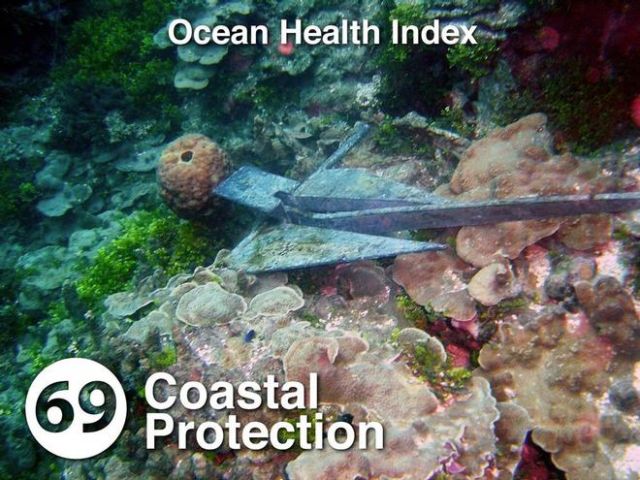 Sailors for the Sea publishes monthly articles that translate the language of marine science into fascinating articles about ocean health.
Sailors for the Sea publishes monthly articles that translate the language of marine science into fascinating articles about ocean health.
To learn more about the organization visit Sailors for the Sea
Anchors effect on carbon storage
Those who sail come to know the ocean intimately; buoyed by its beauty and the rich life it nourishes, but also saddened by damage from pollution, over-exploitation, climate change or other problems.
Are there things boaters can do to lessen such problems and improve ocean health? What is the current status of the ocean's health, anyhow?
The Ocean Health Index is based on the premise that a healthy ocean provides a range of benefits to people now and in the future. This recognizes that people and the ocean must coexist, because human presence and activities affect nearly all aspects of the ocean and marine life and vice versa. In short, people need nature to thrive; and fostering a resilient, productive ocean will promote healthy sustainable societies.
The Ocean Health Index evaluates the world's oceans according to 10 public goals that represent key benefits of healthy marine ecosystems. Each goal is scored from zero to 100 signifying how well it is doing in achieving those benefits. The scores can be looked at by country and goal, and be averaged to produce a regions overall score.
Boaters have unique opportunities to help with these goals, particularly protecting sea grass and coral reef habitats, both of which provide a remarkable suite of benefits to people and marine life, benefits valued at nearly $12,000 per acre every year.
Grass of the Sea
Sea grasses form shallow meadow-like expanses throughout the world's warm and temperate waters. Just like grass on land, as the grass grows, it takes up carbon dioxide and releases oxygen to the water and sediments. Additionally, a sea grass meadow's extensive root system both stabilizes the sediments and stores very large amounts of carbon, keeping it buried for decades or even centuries if not disturbed, reducing the rate of carbon dioxide in the ocean and atmosphere, slowing the rate of global warming and ocean acidification.
Amazingly, seagrasses sequester about as much carbon per square meter as any habitat on earth, including rainforests. Meanwhile, the leaf fronds waving gracefully above form a miniature forest that shelters larvae and young of many commercially important fish and shellfish, as well as beautiful nudibranchs, jellies, worms and crustaceans. Such habitats are also the most important habitats for seahorses. As a further benefit, the flexible fronds are also surprisingly effective at absorbing wave energy and slowing the flow of water, thereby helping to protect coastlines from storm surges.
Seagrasses are globally and regionally threatened by many things. Broad threats include land erosion and consequent sedimentation that clouds the water, reduces photosynthesis and smothers the grasses; and run-off from land of excessive amounts of nitrogen and phosphorus pollution (often from cleaning products and fertilizers) that promote growth of seaweeds or phytoplankton at the expense of seagrasses.
Boaters can play a direct role in reducing a very specific threat, by not anchoring on seagrass beds. Anchors disturb or destroy the root systems, not only does this kill the plants, the sequestered carbon is released into the atmosphere as heat-trapping carbon dioxide. Since most seagrass beds occur in relatively clear and shallow water, boaters should anchor elsewhere and not disrupt the remarkable benefits they offer.
Carbon storage is natural in coastal ecosystems such as seagrasses, tidal marshes and mangroves. The score of 74 is relative to their condition in the early 1980's. A score of 100 would indicate that these habitats are all still intact today.
Read the full article on Power Boat World.

